医学科研教学绘图可编辑素材之微生物学细胞培养Microbiology_cellculture
- 格式:ppt
- 大小:4.94 MB
- 文档页数:22
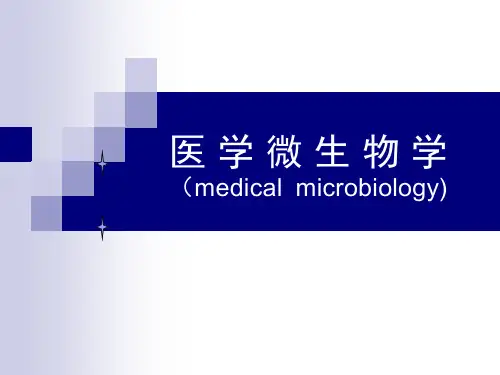

《医学免疫学与微生物学》教学大纲课程编号:CJZYJ10课程名称:医学免疫学与微生物学英文名称:Medical Immunology and Microbiology课程类型:医学基础课总学时:54学时讲课学时:44学时实验学时:10学时学分:适用对象:临床、护理、药学、预防、口腔、检验、影像专业基本要求医学免疫学与微生物学是研究人体免疫现象的原理及应用的一门基础和应用性学科。
其任务是通过该课程的教学,使学生能够对人体免疫系统的结构、功能等方面的基本知识,以及它们与人体健康、疾病的关系有准确的认识。
为应用免疫学的基础理论和基本技能防治感染性疾病和免疫相关性疾病打下基础。
医学微生物学是研究与医学有关的病原微生物的生物学性状、致病性以及对病原微生物所致疾病进行微生物学诊断和防治的学科。
它是临床医学专业的基础医学课程,其任务是通过本课程的教学,为学习临床医学相关课程以及从事感染性疾病的诊断和防治工作打下基础。
按教材分章顺序,每章分掌握、熟悉和了解三级要求,一部分内容为教师讲授,另一部分安排学生自学。
其中掌握和熟悉的内容是医学免疫学与微生物学的基础理论和基本知识,是教师讲授和学生学习理解的重点。
对于了解的内容或部分熟悉的内容可酌定为自学。
关于免疫学和微生物学的基本技能训练,即实验教学,可结合多媒体课件演示进行。
教学时间分配第一章抗原目的要求:1.掌握抗原的概念与抗原的两种特性;抗原的异物性和特异性。
2.熟悉半抗原和完全抗原的概念、抗原的分类方法和医学上常见的抗原。
学时安排:理论课2学时教学内容:1.抗原的概念;抗原的免疫原性和免疫反应性;半抗原和完全抗原的概念。
2.抗原的分类TD-Ag和TI-Ag;异种抗原、同种异型抗原和自身抗原。
3.决定抗原免疫原性的异物性、化学特性。
4.抗原特异性的分子基础—抗原决定簇(表位)的概念、种类。
5.医学上重要的抗原物质。
第二章免疫球蛋白与抗体目的要求:1.掌握抗体与免疫球蛋白的概念;免疫球蛋白的基本结构、功能区及其功能、免疫球蛋白的生物学活性;五类免疫球蛋白的特征与功能。
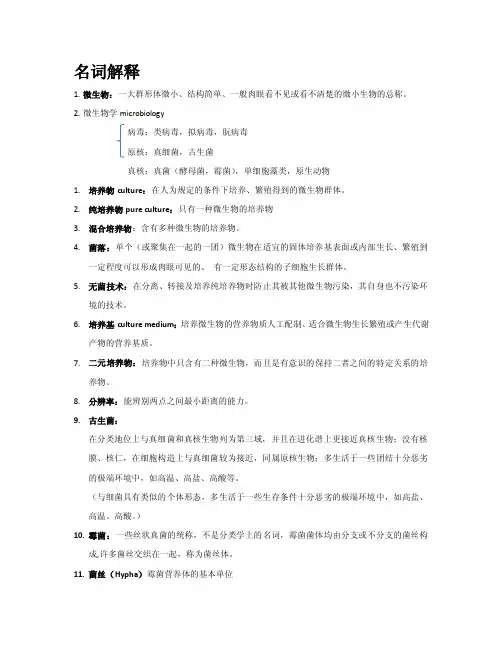
名词解释1.微生物:一大群形体微小、结构简单、一般肉眼看不见或看不清楚的微小生物的总称。
2.微生物学microbiology病毒:类病毒,拟病毒,朊病毒原核:真细菌,古生菌真核:真菌(酵母菌,霉菌),单细胞藻类,原生动物1.培养物culture:在人为规定的条件下培养、繁殖得到的微生物群体。
2.纯培养物pure culture:只有一种微生物的培养物3.混合培养物:含有多种微生物的培养物。
4.菌落:单个(或聚集在一起的一团)微生物在适宜的固体培养基表面或内部生长、繁殖到一定程度可以形成肉眼可见的、有一定形态结构的子细胞生长群体。
5.无菌技术:在分离、转接及培养纯培养物时防止其被其他微生物污染,其自身也不污染环境的技术。
6.培养基culture medium:培养微生物的营养物质人工配制、适合微生物生长繁殖或产生代谢产物的营养基质。
7.二元培养物:培养物中只含有二种微生物,而且是有意识的保持二者之间的特定关系的培养物。
8.分辨率:能辨别两点之间最小距离的能力。
9.古生菌:在分类地位上与真细菌和真核生物列为第三域,并且在进化谱上更接近真核生物;没有核膜、核仁,在细胞构造上与真细菌较为接近,同属原核生物;多生活于一些团结十分恶劣的极端环境中,如高温、高盐、高酸等。
(与细菌具有类似的个体形态,多生活于一些生存条件十分恶劣的极端环境中,如高盐、高温、高酸。
)10.霉菌:一些丝状真菌的统称,不是分类学上的名词,霉菌菌体均由分支或不分支的菌丝构成,许多菌丝交织在一起,称为菌丝体。
11.菌丝(Hypha)霉菌营养体的基本单位12.由许多分枝菌丝相互交织而成的一个菌丝集团,称为菌丝体菌丝体(Mycelium)13.酵母菌:一群单细胞的真核微生物,无分类学意义的普通名称,通常以芽殖或裂殖来进行无性繁殖的单细胞真菌,以与霉菌分开。
极少数种可产生子囊孢子进行有性繁殖。
14.原核微生物:一大类细胞微小、细胞核无核膜包裹(只有称作核区的裸露DNA)的原始单细胞生物。
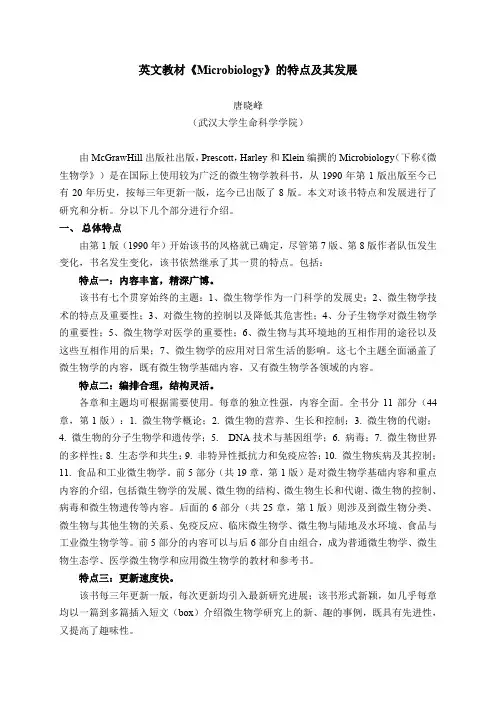
英文教材《Microbiology》的特点及其发展唐晓峰(武汉大学生命科学学院)由McGrawHill出版社出版,Prescott,Harley和Klein编撰的Microbiology(下称《微生物学》)是在国际上使用较为广泛的微生物学教科书,从1990年第1版出版至今已有20年历史,按每三年更新一版,迄今已出版了8版。
本文对该书特点和发展进行了研究和分析。
分以下几个部分进行介绍。
一、总体特点由第1版(1990年)开始该书的风格就已确定,尽管第7版、第8版作者队伍发生变化,书名发生变化,该书依然继承了其一贯的特点。
包括:特点一:内容丰富,精深广博。
该书有七个贯穿始终的主题:1、微生物学作为一门科学的发展史;2、微生物学技术的特点及重要性;3、对微生物的控制以及降低其危害性;4、分子生物学对微生物学的重要性;5、微生物学对医学的重要性;6、微生物与其环境地的互相作用的途径以及这些互相作用的后果;7、微生物学的应用对日常生活的影响。
这七个主题全面涵盖了微生物学的内容,既有微生物学基础内容,又有微生物学各领域的内容。
特点二:编排合理,结构灵活。
各章和主题均可根据需要使用。
每章的独立性强,内容全面。
全书分11部分(44章,第1版):1. 微生物学概论;2. 微生物的营养、生长和控制;3. 微生物的代谢;4. 微生物的分子生物学和遗传学;5. DNA技术与基因组学;6. 病毒;7. 微生物世界的多样性;8. 生态学和共生;9. 非特异性抵抗力和免疫应答;10. 微生物疾病及其控制;11. 食品和工业微生物学。
前5部分(共19章,第1版)是对微生物学基础内容和重点内容的介绍,包括微生物学的发展、微生物的结构、微生物生长和代谢、微生物的控制、病毒和微生物遗传等内容。
后面的6部分(共25章,第1版)则涉及到微生物分类、微生物与其他生物的关系、免疫反应、临床微生物学、微生物与陆地及水环境、食品与工业微生物学等。
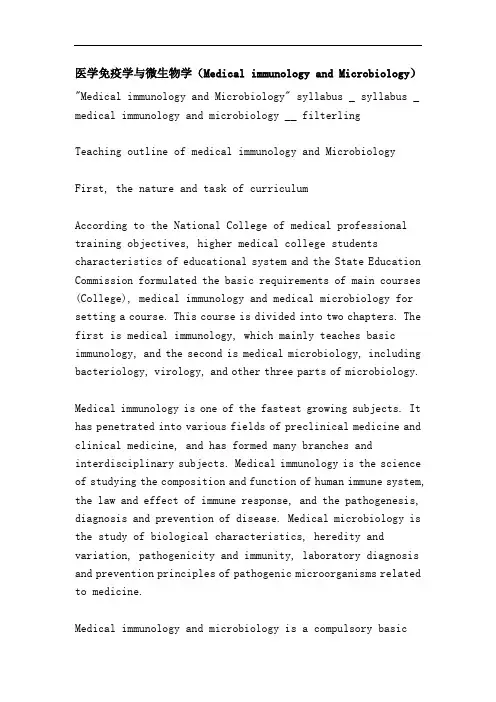
医学免疫学与微生物学(Medical immunology and Microbiology)"Medical immunology and Microbiology" syllabus _ syllabus _ medical immunology and microbiology __ filterlingTeaching outline of medical immunology and MicrobiologyFirst, the nature and task of curriculumAccording to the National College of medical professional training objectives, higher medical college students characteristics of educational system and the State Education Commission formulated the basic requirements of main courses (College), medical immunology and medical microbiology for setting a course. This course is divided into two chapters. The first is medical immunology, which mainly teaches basic immunology, and the second is medical microbiology, including bacteriology, virology, and other three parts of microbiology.Medical immunology is one of the fastest growing subjects. It has penetrated into various fields of preclinical medicine and clinical medicine, and has formed many branches and interdisciplinary subjects. Medical immunology is the science of studying the composition and function of human immune system, the law and effect of immune response, and the pathogenesis, diagnosis and prevention of disease. Medical microbiology is the study of biological characteristics, heredity and variation, pathogenicity and immunity, laboratory diagnosis and prevention principles of pathogenic microorganisms related to medicine.Medical immunology and microbiology is a compulsory basicmedical course for clinical medical students. The task is to enable students to master the basic theory, basic knowledge and basic skills of medical immunology and microbiology, and lay the foundation for studying other basic medical courses and clinical medicine courses.Two, the basic requirements of curriculum teachingThe basic teaching requirement of this course is divided into two parts; in medical immunology teaching, students are required to master the composition and function of the immune system, immune response and regulation of physiological function, the basic mechanism of hypersensitivity reaction and the principle of prevention and treatment, and understand the relationship between immunological diseases, immunological applications in the medical practice; in medical microbiology teaching, students are required to master the bacteria, viruses and fungi, pathogenic microorganism morphology, structure, growth and reproduction, genetic variation and other biological characteristics, pathogenicity and immunity of pathogenic microorganisms, inspection methods and principle of prevention and treatment of microbial infections and pathogens, disinfection and sterilization method.The number of hours in this course is 90, the number of TV teaching hours is 18, and the experimental class hours are 27. This course is 5 credits.The first basic immunologyOverview (1 hours)[teaching content]First, the concept of modern immunology and ImmunologyTwo. The composition and function of the immune system[teaching requirements]Grasp the concepts of modern immunity and immunology, and the function of immune system.Be familiar with the composition of the immune system.To understand the main characteristics of immunology development today.Chapter 1 immune organs (3 hours)[teaching content]The structure and function of central immune organsTwo. The structure and function of peripheral immune organs[teaching requirements]To master the distribution of T and B lymphocytes in peripheral immune organs.Familiarity with the structure and function of the central andperipheral immune organs.Understanding the pathway of lymphocyte recirculation.The second chapter: immune cells (3 hours)[teaching content]Hematopoietic stem cellTwo, lymphocyte 1.T lymphocyte, 2.B lymphocyte 3.NK cellThree. Mononuclear phagocyteFour. Antigen presenting cellsFive. Other immune cells[teaching requirements]To grasp the surface markers, subclasses and functions of T and B lymphocytes, and the concept of antigen-presenting cells.Familiar with the concept of hematopoietic stem cells, the characteristics and functions of NK cells, the surface markers and major functions of mononuclear phagocytes, and understand the characteristics and functions of other immune cells.The third chapter: immunoglobulin (3 hours)[teaching content]The concept of immunoglobulin and antibodyTwo. The structure, functional region and enzymatic fragments of immunoglobulinThree. Biological activity of immunoglobulinFour. Immunoglobulin serotypes (antigenicity)Five. Characteristics and functions of various immunoglobulinsSix. Immunoglobulin genes and biosynthesisSeven. Artificial antibodies[teaching requirements]Grasp the concept of immunoglobulin and antibody, the structure, function and enzymatic fragments of immunoglobulin, biological activity of immunoglobulin.Familiar with the characteristics and functions of various immunoglobulins, and the concept of monoclonal antibodies.Understanding the serotypes, genes, and biosynthesis of immunoglobulins.The fourth chapter: complement system (3 hours)[teaching content]First, the concept of complementTwo. Composition and properties of complement systemThree. Activation of complement system1. activation of classical pathways2. alternative pathway activationFour. Regulation of complement system activationFive. The biological function of complement system[teaching requirements]Mastering the concept of complement and the biological function of complement system.Be familiar with the activation and regulation of complement system.Understanding the site and nature of complement formation.The fifth chapter cytokines (1.5 hours)[teaching content]First, the concept of cytokinesTwo. Kinds of cytokinesThree. Characteristics of cytokinesFour. The biological role of cytokinesFive. Characteristics and biological activities of major cytokines[teaching requirements]To grasp the concept and classification of cytokines.Understanding the characteristics and biological functions of cytokines.The sixth chapter antigen (2 hours)[teaching content]The concept of antigenTwo. The factors that determine immunogenicityThree. Specificity and cross reactivity of antigenFour. Classification of antigensFive. Important antigen substances in medicine[teaching requirements]The basic concepts of antigen, antigen determinant, thymus dependent antigen, non thymus dependent antigen, complete antigen and hapten are mastered.Familiar with the factors that determine immunogenicity, important antigen substances in medicine.The seventh chapter is mainly about the histocompatibility complex and its products (2 hours)[teaching content]First, the concept of MHCGene structure of two and HLAThree. Structure, distribution and function of HLA moleculeThe medical significance of four and HLA[teaching requirements]Master the basic concepts of MHC.Familiar with the structure, distribution and function of HLA molecules.Understanding the genetic structure of HLA and its medical significance.The eighth chapter was immune response (5 hours)[teaching content]- overview of immune responseTwo, B cell-mediated humoral immune response(I) the process of B cell response induced by thymus dependent antigen(two) the general law of antibody production and its medical significance(three) humoral immune effectThree. Cell-mediated immune response(1) cell-mediated immune response mediated by TD cells(two) cell-mediated immune response mediated by Tc cellsFour. Immune tolerance(1) the concept of immune tolerance(two) factors affecting the formation of immune tolerance(three) the characteristics and clinical significance of immune toleranceFive. Negative feedback regulation of immune response(1) negative feedback regulation of antibodies(two) Regulation of Ts cells[teaching requirements]To understand the concept and characteristics of immune response, the process of B cell response induced by thymus dependent antigen, the general rule of antibody production, the cell-mediated immune response mediated by TD cells and Tc cells, and the concept of immune tolerance.Familiar with the characteristics of immune tolerance.To understand the negative feedback regulation of immune response and the factors influencing immune tolerance formation.The ninth chapter hypersensitivity (4 - 5 hours)[teaching content]First, the concept and classification of hypersensitivityTwo. The pathogenesis of various types of hypersensitivity and common diseasesPrinciple of prevention and treatment of type three and I hypersensitivity diseases[teaching requirements]To understand the concept and classification of hypersensitivity, and the pathogenesis of each type of hypersensitivity reaction.Familiar with the clinical types of hypersensitivity diseases, I type hypersensitivity disease prevention and treatment principles.The tenth chapter immunology application (2 hours)[teaching content]First, immune prevention and control(1) artificial immunity and artificial passive immunity(two) commonly used biological agents for artificial immunity(three) precautions for vaccination 122Two 、 immunological detection(1) antigen and antibody reactions and their detection methods1. characteristics of antigen antibody reaction in vitro2. factors affecting antigen antibody reaction3. commonly used antigen antibody reaction detection method(two) detection of immune function of organism1. commonly used in vitro detection2. commonly used in vivo detection[teaching requirements]Master the concepts of artificial immunity and artificial passive immunity, and commonly used biological agents for artificial immunity.Familiar with the types of vaccination and precautions.To understand the characteristics, influencing factors and common detection methods of antigen antibody reaction in vitro, it is commonly used in vitro and in vivo detection methods of immune function.Second Medical MicrobiologySummary[teaching content]First, the concept and classification of microorganismsTwo. The relationship between microorganisms and human beingsThree. The concept and category of medical microbiologyFour. General situation and current situation of medical microbiology[teaching requirements]Grasp the concepts of microorganisms, pathogenic microorganisms and medical microbiology.Familiar with the classification of microorganisms and their relationship with human beings.To understand the category and development of medical microbiology.Bacteriology part (eleventh to twenty-third)The eleventh chapter is the morphology and structure of bacteria (2 hours, including an overview)[teaching content]First, the size and morphology of bacteriaTwo. The structure of bacteria(1) the basic structure of bacteria(two) the special structure of bacteriaThree. The principle of bacterial morphology examination[teaching requirements]Master the typical and atypical bacteria morphology, cell wall structure and characteristics of G and G + bacteria, special structure and medical significance of bacteria.Familiar with the units for measuring bacteria, the basic structure of bacteria, and the significance of gram staining.To understand the examination method of bacterial morphology.The twelfth chapter is the growth, reproduction and metabolism of bacteria (2 hours)[teaching content]First, the nutrients of bacteriaTwo. Growth and reproduction of bacteriaThree. Metabolites of bacteria and their significanceFour. Artificial culture of bacteria[teaching requirements]Grasp the conditions, methods and speed of bacterial growth and reproduction, the types and significance of bacterial synthetic metabolites.Familiarity with bacterial growth curves and the significance of catabolic products.To understand the methods of artificial culture of bacteria, the common medium, the growth of bacteria in the culture medium and the practical significance of artificial culture of bacteria.The thirteenth chapter: heredity and variation of bacteria (2 hours)[teaching content]First, the concept of heredity and variationTwo. Examples of bacterial variationThree. The material basis of bacterial genetic variationFour. The mechanism of bacterial variationFive. The practical application of bacterial variation[teaching requirements]Grasp the basic concepts of heredity, variation, plasmid and bacteriophage.Familiar with bacterial common variation and the mechanism of variation.Understanding the practical application of bacterial variation.The fourteenth chapter: pathogenicity of bacteria (3 hours)[teaching content]First, the concept of pathogenicity and virulence of bacteriaTwo. Invasive ability of bacteria(1) surface structure of bacteria(two) invasive enzymesThree. Bacterial toxins(a) exotoxin(two) endotoxinFour, the number of bacteria and invasion of the portalFive. The occurrence, development and outcome of infection(1) the source of infection(two) the way of infection(three) the type of infection[teaching requirements]Master the concept of bacterial virulence factors, bacterial invasion, characteristic and difference between inside and outside the bacterial toxin, the concept of dominant recessive infection infection, bacteremia, sepsis, carriers, sepsis, sepsis.Be familiar with the source and mode of infection.Understanding the number of bacteria and the relationship between portal invasion and disease.The fifteenth chapter is antibacterial immunity (1 hours)[teaching content]First, the nonspecific defense function of organism(1) barrier structure(two) phagocytes(three) antibacterial substances in body fluidsTwo. Specific antibacterial immunity of organism(1) the function and characteristics of humoral immunity(two) the function and characteristics of cellular immunity[teaching requirements]To master the antibacterial action of skin, mucous membrane, placenta and blood-brain barrier, and the process and result of phagocytosis and sterilization by phagocytes.Familiarity with antibacterial activity and characteristics of humoral and cellular immunity.To understand the types and functions of antibacterial substances in body fluids.The sixteenth chapter disinfection and sterilization (1 hours)[teaching content]First, physical disinfection and sterilization method(1) thermal sterilization(two) ultraviolet radiation and ionizing radiation sterilization(three) filtration sterilization methodTwo. Chemical disinfection(1) chemical disinfectants(two) the action mechanism of chemical disinfectant(three) factors affecting the action of chemical disinfectants[teaching requirements]Grasp the concepts of disinfection, sterilization, asepsis and aseptic operation.Familiar with the commonly used thermal sterilization method, ultraviolet sterilization method, commonly used chemical disinfectants.To understand the action mechanism and influence factors of commonly used chemical disinfectants.The seventeenth chapter is the laboratory detection principle of bacterial infection (2 hours)[teaching content]Detection of pathogenic bacteria and their components(1) collection and submission of specimens(two) commonly used detection methodsTwo. Detection of bacterial specific antibodies(1) serological tests commonly used(two) precautions for detecting antibodies and analysisresults[teaching requirements]Familiar with specimen collection and submission, isolation, cultivation and identification of pathogenic bacteria, serological detection methods commonly used to understand the results of the note.The eighteenth chapter ~ twenty-three chapter bacteriology each part (8 hours)[teaching content]A pathogenic cocci: Staphylococcus, Streptococcus (including pneumococcus), Neisseria gonorrhoeaeTwo. Enterobacteriaceae: Escherichia, Salmonella, Shigella, and other intestinal bacteriaThree. Vibrio and Campylobacter; Vibrio cholerae and CampylobacterFour, anaerobic bacteria, anaerobic bacterium, PI anaerobicbacteriaFive. Mycobacterium: Mycobacterium tuberculosis, leprosy bacillusSix. Other pathogenic bacteria[teaching requirements]This part is mainly based on self-study. Familiar with the main biological characteristics of pathogenic bacteria, pathogenicity and immunity, laboratory examination principles and principles of prevention and treatment.Virology part (twenty-fourth to thirty-second)Summary[teaching content]Basic concepts and characteristics of virusesThe twenty-fourth chapter is the basic character and classification of virus (3 hours)[teaching content]The morphology, structure and chemical composition of the virus(1) the size and morphology of the virus(two) the structure and chemical composition of virusesTwo. Virus proliferation and interference(1) proliferation of viruses(two) the interference of virusThree, physical and chemical factors on the impact of the virusFour. Classification of viruses(1) modern classification(two) clinical classification[teaching requirements]Grasp the basic concept, basic structure, proliferation mode and proliferation cycle of virus.Familiar with the chemical composition and interference phenomenon of virus.To understand the influence of physical and chemical factors on the virus, and to classify the virus.The twenty-fifth chapter: virus infection and immunity (3 hours)[teaching content]Infection and pathogenicity of viruses(1) the route of viral infection and its diffusion in vivo(two) the results and pathogenesis of viral infection(three) the type of virus infectionTwo. Antiviral immunity(1) nonspecific immunity(two) specific immunity[teaching requirements]Grasp the way of virus infection and the way of diffusing in vivo.Be familiar with the pathogenesis of viral infection and the type of infection.Understanding the mechanism of organism antiviral infection.The twenty-sixth chapter is the laboratory detection principle of virus infection (1.5 hours)[teaching content]First, specimen collection and processingTwo, commonly used detection methods(1) detection of virus bodies(two) detection of viral antigens and antibodies(three) detection of viral nucleic acids[teaching requirements]To understand the sample collection, treatment and common detection methods of virus infection.The twenty-seventh chapter is the prevention and cure principle of virus infection (O.5 hours)[teaching content]First, the specific prevention of viral infection(1) artificial immunity(two) artificial passive immunityTwo. Prevention and treatment of viral infectionThe twenty-fifth chapter: virus infection and immunity (3 hours)[teaching content]Infection and pathogenicity of viruses(1) the route of viral infection and its diffusion in vivo(two) the results and pathogenesis of viral infection(three) the type of virus infectionTwo. Antiviral immunity(1) nonspecific immunity(two) specific immunity[teaching requirements]Grasp the way of virus infection and the way of diffusing in vivo.Be familiar with the pathogenesis of viral infection and the type of infection.Understanding the mechanism of organism antiviral infection.The twenty-sixth chapter is the laboratory detection principle of virus infection (1.5 hours)[teaching content]First, specimen collection and processingTwo, commonly used detection methods(1) detection of virus bodies(two) detection of viral antigens and antibodies(three) detection of viral nucleic acids[teaching requirements]To understand the sample collection, treatment and common detection methods of virus infection.The twenty-seventh chapter is the prevention and cure principle of virus infection (O.5 hours)[teaching content]First, the specific prevention of viral infection(1) artificial immunity(two) artificial passive immunityTwo. Prevention and treatment of viral infection[teaching requirements]Be familiar with artificial immune preparations commonly used in viral infections. Understand the commonly used drugs for the prevention and treatment of viral infections.Twenty-eighth chapters to thirty-two chapters on Virology (9 hours)[teaching content]Respiratory viruses(1) influenza virus(two) other respiratory virusesTwo. Enterovirus(1) poliovirus(two) the coxsackie and echovirus (three) other enterovirusesThree. Hepatitis virusFour, China(1) Japanese encephalitis virus (two) epidemic hemorrhagic fever virus Five. Other viruses(1) rabies virus(two) human immunodeficiency virus (three) herpes virus(four) rubella virus[teaching requirements]To grasp the main biological characteristics, pathogenicity and immunity of influenza virus, hepatitis virus and human immunodeficiency virusFamiliar with the main biological characteristics, pathogenicity and immunity of poliovirus, Japanese encephalitis virus, epidemic hemorrhagic fever virus, rabies virus, herpes virus and rubella virus.Understanding: common types of respiratory viruses, enteroviruses, and herpes viruses. Detection and prevention of the above viruses thirdThirty-third chapter to thirty-seven chapter other pathogenic microorganism (2 hours)[teaching content]Mycoplasma aChlamydia trachomatis twoRickettsia threeFour, helicoidFive. Pathogenic fungi[teaching requirements]Grasp the basic concepts of mycoplasma, chlamydia, Rickettsia, leptospira and fungi.Familiar with the main biological characteristics, pathogenicity and immunity of mycoplasma, chlamydia, Rickettsia, leptospira and fungi.To understand the detection and prevention principles of pathogenic microorganisms.Experiment (27 hours, 3 hours per experiment)Precipitation reaction(1) two-way agar diffusion test(two) one way agar diffusion testTwo. Agglutination reaction(I) agglutination test in vitro(two) slide agglutinationThree. Enzyme linked immunosorbent assayDouble antibody sandwich method for the detection of early pregnancy (using Kit)Four. Bacterial morphology, special structure observation and microscope use(1) observation of basic morphologyCoccus, bacillus, vibrio.(two) observation of special structureSpores, capsule, flagella, fimbriae.(three) microscopeFive. Bacterial culture and staining examination(1) colony observationSmooth, rough, mucoid.(two) observation of pigment and hemolysis(three) Gram staining methodIn experiment six, tetanus exotoxin of pathogenic and antitoxin protective effect (animal experiment)Seven. Determination of anti streptococcal hemolysin "O" (using Kit)Eight, endotoxin (pyrogen) -- Determination of limulus test (the kit)Nine. Methods of virus culture and laboratory diagnosis。
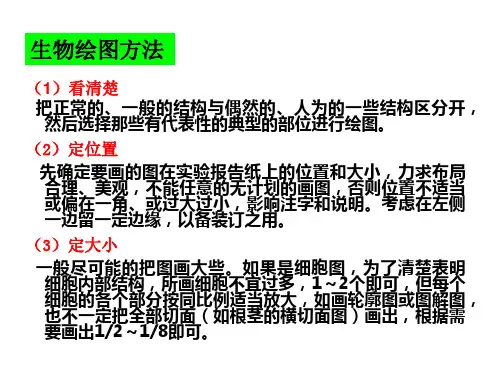
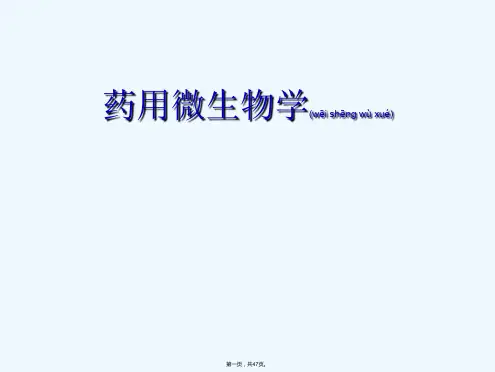
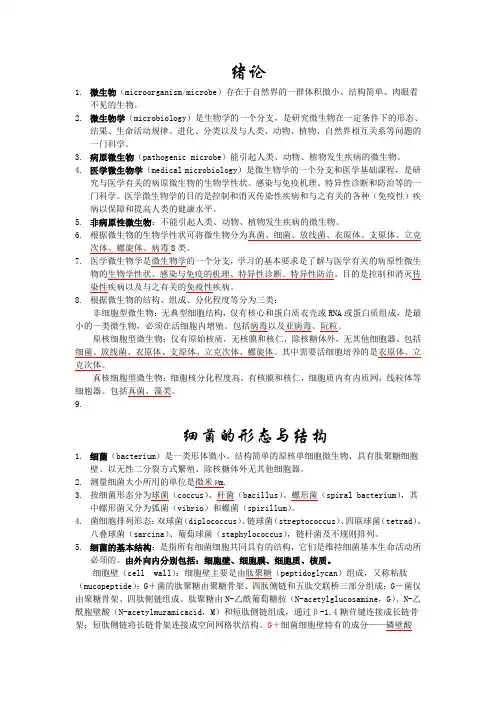
绪论1.微生物(microorganism/microbe)存在于自然界的一群体积微小、结构简单、肉眼看不见的生物。
2.微生物学(microbiology)是生物学的一个分支,是研究微生物在一定条件下的形态、结果、生命活动规律、进化、分类以及与人类、动物、植物、自然界相互关系等问题的一门科学。
3.病原微生物(pathogenic microbe)能引起人类、动物、植物发生疾病的微生物。
4.医学微生物学(medical microbiology)是微生物学的一个分支和医学基础课程,是研究与医学有关的病原微生物的生物学性状、感染与免疫机理、特异性诊断和防治等的一门科学。
医学微生物学的目的是控制和消灭传染性疾病和与之有关的各种(免疫性)疾病以保障和提高人类的健康水平。
5.非病原性微生物:不能引起人类、动物、植物发生疾病的微生物。
6.根据微生物的生物学性状可将微生物分为真菌、细菌、放线菌、衣原体、支原体、立克次体、螺旋体、病毒8类。
7.医学微生物学是微生物学的一个分支,学习的基本要求是了解与医学有关的病原性微生物的生物学性状、感染与免疫的机理、特异性诊断、特异性防治。
目的是控制和消灭传染性疾病以及与之有关的免疫性疾病。
8.根据微生物的结构、组成、分化程度等分为三类:非细胞型微生物:无典型细胞结构,仅有核心和蛋白质衣壳或RNA或蛋白质组成,是最小的一类微生物,必须在活细胞内增殖。
包括病毒以及亚病毒、阮粒。
原核细胞型微生物:仅有原始核质,无核膜和核仁,除核糖体外,无其他细胞器。
包括细菌、放线菌、衣原体、支原体、立克次体、螺旋体。
其中需要活细胞培养的是衣原体、立克次体。
真核细胞型微生物:细胞核分化程度高,有核膜和核仁,细胞质内有内质网,线粒体等细胞器。
包括真菌、藻类。
9.细菌的形态与结构1.细菌(bacterium)是一类形体微小、结构简单的原核单细胞微生物、具有肽聚糖细胞壁、以无性二分裂方式繁殖、除核糖体外无其他细胞器。

医学微生物学名词解释绪论1.微生物(microorganism):是存在于自然界的一大群体形微小、结构简单、肉眼直接看不见,必须借助光学显微镜或电子显微镜放大数百倍、数千倍,甚至数万倍才能观察到的微小生物。
2.微生物学(microbiology):是生命科学的一门重要学科,主要研究微生物的种类、分布、形态、结构、代谢、生长繁殖、遗传和变异及其与人类、动物、植物、自然界的相互关系。
3.医学微生物学(medicalmicrobiology):主要研究与医学有关的病原微生物的生物学特性、致病机制、机体的抗感染免疫、特异性检测方法以及相关感染性疾病的防治措施等,以控制和消灭感染性疾病,达到保障和提高人类健康水平的目的。
4.朊粒(prion):传染性蛋白因子,只含蛋白质,无核酸组分,引起海绵状脑病,是一种慢性进行性致死性中枢神经系统疾病。
第一章细菌的形态与结构1.细胞壁(cellwall):位于菌细胞的最外层,包围在细胞膜的周围。
是一种膜状结构,组成复杂,革兰染色法可分为阳性菌与阴性菌,共有组分是肽聚糖。
2.肽聚糖(peptidoglycan):原核细胞特有的细胞壁的主要组分,由聚糖骨架、四肽侧键和五肽交联桥构成。
3.磷壁酸(teichoicacid):是革兰阳性菌的特有成分,是由核糖醇或甘油残基经磷酸二酯键互相连接而成的长链多聚体,穿插于肽聚糖中,按其结合部位不同,分为壁磷壁酸和膜磷壁酸两种。
4.脂多糖(LPS):格兰阴性菌细胞壁外膜伸出的特殊结构,即细胞内毒素,由脂质A、核心多糖和特异多糖组成。
5.L型细菌(L-form)细菌缺陷型,有些细菌在体内外环境及抗生素等作用下,可部分或全部失去细胞壁。
6.青霉素结合蛋白(PBP):与肽聚糖合成有关的酶类,是青霉素作用的主要靶位。
7.中介体(mesosome):细菌部分细胞膜内陷、折叠、卷曲形成的囊状物,有效地扩大了细胞膜面积,相应地增加了酶的含量和能量的产生,功能类似于真核细胞的线粒体,亦称拟线粒体。

体构象无变化;⑤特异性。
运送的物质:氨基酸、单糖、维生素、SO42-、PO33-。
三、主动运输——主要方式特点:①物质逆浓度梯度运输;②需要能量;③需膜上专一的载体蛋白(透过酶);④透过酶构象发生变化。
具体方式有:①初级主动运输;②次级主动运输;③ATP结合性盒式转运;④K+、Na+ ATP酶系统;⑤铁载体运输系统;⑥基因移位。
基因移位(基团移位)——也叫磷酸移位酶系统:是一种需要能量,在一系列酶的推动下所进行的改变了被运送物质化学性质的运输方式。
运送物质:糖(葡萄糖、果糖、甘露聚糖)、核苷酸、嘌呤。
第三节培养基培养基:是人工配制而成的,适合微生物生长繁殖或产生代谢产物的营养基质。
一、培养基的配制原则总原则:①满足微生物生长的营养物质:碳素、氮素、矿质元素、生长因子;②满足微生物生长的环境条件:pH、渗透压、Eh(氧化还原电位)、水分、通气状况。
原则一:目标明确——选择是适宜的营养物质(根据营养需求配制)①根据培养微生物的营养类型:自养:完全是简单的无机物;异养:至少有一种有机物质。
②根据培养微生物的主要类型:细菌、放线菌、酵母菌、霉菌,培养基组分各不相同。
原则二:营养协调——营养物质的浓度和配比合适;①水>碳源>氮源>P、S>K、Mg>生长因子;②合适的碳氮比,一般为6:1。
原则三:理化条件适宜;①pH:各类微生物生长繁殖的最适pH 不同,需调节pH。
外源调节:用NaOH、HCl调节;内源调节:缓冲剂(K2HPO4、KH2PO4在pH6.4-7.2内有效)“备用碱”:CaCO3pH<6.4时使用。
天然的缓冲系统:氨基酸、肽、蛋白质②渗透压③Eh:培养严格厌氧菌需要加还原性物质。
原则四:经济节约——原料来源的选择;大规模生产实践中:以粗代细、以废代好、以简代繁。
二、培养基的类型1、根据化学组成①天然培养基或非化学限定培养基以化学成分不甚清楚或不恒定的天然有机物质为主要成分的培养基。
②合成培养基或化学限定培养基用以化学成分已知、重量已知的物质制成的培养基。
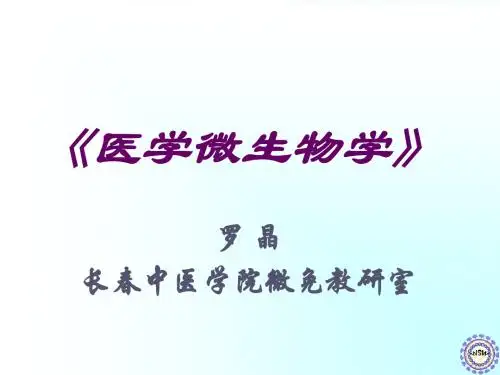
微生物名词解释微生物(Microbe): 微观的生物机体。
(细小的肉眼看不见的生物)微生物(Microorgamism): 微观的生命形式。
微生物学(microbiology):研究微生物生命活动的科学。
微米(Micrometer): 一种测量单位:1/1,000mm,缩写为um。
原核微生物(prokaryotic microbe):指核质和细胞质之间不存在明显核膜,其染色体由单一核酸组成的一类微生物。
原核细胞型微生物(procaryotic cell microbe):指没有真正细胞核(即核质和细胞质之间没有明显核膜)的细胞型微生物。
真核细胞型微生物(eukaryotic cell microbe):指具有真正细胞核(即核质和细胞质之间存在明显核膜)的细胞型微生物。
真菌(fungi):有真正细胞核,没有叶绿素的生物,它们一般都能进行有性和无性繁殖,能产生孢子,它们的营养体通常是丝状的且有分枝结构,具有甲壳质和纤维质的细胞壁,并且常常是进行吸收营养的生物。
霉菌(Mold): 具有丝状结构特征的真菌。
细菌(bacterium):单或多细胞的微小原核生物。
病毒(virus):是一类没有细胞结构但有遗传复制等生命特征,主要由核酸和蛋白质组成的大分子生物。
是比细菌更小的专性细胞内寄生的微生物,大多数能通过细菌过滤器。
放线菌(actionomycetes):一目形成真的菌丝成分枝丝状体的细菌。
蓝细菌(cyanobacterium):是光合微生物,蓝细菌是能进行光合作用的原核微生物。
原生生物(protistan):指比较简单的具有真核的生物。
原生动物(protozoa):单细胞的原生生物。
免疫学(immunology):研究利用预防接种法治疗疾病的科学。
立克次氏体(Richettsia):节肢动物专性细胞内寄生物,它的许多类型对人和其它动物是致病的微生物。
感染(Infection): 宿主由于微生物生长的病理学状况。
医学微生物学名词解释绪论1.微生物(microorganism):是存在于自然界的一大群体形微小、结构简单、肉眼直接看不见,必须借助光学显微镜或电子显微镜放大数百倍、数千倍,甚至数万倍才能观察到的微小生物。
2.微生物学(microbiology):是生命科学的一门重要学科,主要研究微生物的种类、分布、形态、结构、代谢、生长繁殖、遗传和变异及其与人类、动物、植物、自然界的相互关系。
3.医学微生物学(medical microbiology):主要研究与医学有关的病原微生物的生物学特性、致病机制、机体的抗感染免疫、特异性检测方法以及相关感染性疾病的防治措施等,以控制和消灭感染性疾病,达到保障和提高人类健康水平的目的。
4.朊粒(prion):传染性蛋白因子,只含蛋白质,无核酸组分,引起海绵状脑病,是一种慢性进行性致死性中枢神经系统疾病。
第一章细菌的形态与结构1.细胞壁(cell wall):位于菌细胞的最外层,包围在细胞膜的周围。
是一种膜状结构,组成复杂,革兰染色法可分为阳性菌与阴性菌,共有组分是肽聚糖。
2.肽聚糖(peptidoglycan):原核细胞特有的细胞壁的主要组分,由聚糖骨架、四肽侧键和五肽交联桥构成。
3.磷壁酸(teichoic acid):是革兰阳性菌的特有成分,是由核糖醇或甘油残基经磷酸二酯键互相连接而成的长链多聚体,穿插于肽聚糖中,按其结合部位不同,分为壁磷壁酸和膜磷壁酸两种。
4.脂多糖(LPS):格兰阴性菌细胞壁外膜伸出的特殊结构,即细胞内毒素,由脂质A、核心多糖和特异多糖组成。
5.L型细菌(L-form)细菌缺陷型,有些细菌在体内外环境及抗生素等作用下,可部分或全部失去细胞壁。
6.青霉素结合蛋白(PBP):与肽聚糖合成有关的酶类,是青霉素作用的主要靶位。
7.中介体(mesosome):细菌部分细胞膜内陷、折叠、卷曲形成的囊状物,有效地扩大了细胞膜面积,相应地增加了酶的含量和能量的产生,功能类似于真核细胞的线粒体,亦称拟线粒体。
实验报告细胞画画教程实验报告:细胞画画教程引言:细胞画是一种通过细胞结构和特征来绘制细胞的艺术形式。
它既能够帮助学生更好地理解细胞的组成和功能,又能够培养学生的观察力和艺术表现力。
本实验将介绍如何使用简单的素材和技巧来画出细胞的立体感和细节。
材料:1. 铅笔2. 彩色笔或蜡笔3. A4白纸4. 细胞结构示意图(可从教科书或互联网上找到)实验步骤:1. 首先,选取一个细胞结构示意图作为参考。
通过观察示意图,了解细胞的主要组成部分和形状。
2. 将示意图上的细胞结构轻轻地用铅笔画在白纸上。
可以使用简单的几何形状,如圆形或椭圆形来表示细胞的外形。
3. 接下来,通过观察示意图,用铅笔在细胞的外形内部画出主要的细胞器官和细节。
可以使用直线和曲线来表示细胞器官的形状,如核,线粒体和内质网等。
4. 一旦完成基本的细胞结构,可以使用彩色笔或蜡笔来渲染细胞和细胞器官的颜色。
可以使用不同的颜色来表示不同的细胞器官,并给细胞增添立体感。
5. 最后,可以用彩色笔或蜡笔添加一些阴影和细节,使细胞的画面更加生动和逼真。
讨论和结论:通过本次实验,我们学会了使用简单的素材和技巧来绘制细胞画。
细胞画不仅可以帮助我们更好地理解细胞的结构和特征,还可以培养我们的观察力和艺术表现力。
我们可以根据需要使用不同的颜色和技巧来绘制各种类型的细胞,从而更好地展现细胞的复杂性和多样性。
结语:细胞画是一种非常有趣和有用的艺术形式,通过绘制细胞,我们可以更深入地了解细胞的组成和功能。
希望这个细胞画画教程可以帮助你更好地理解细胞,并激发你对艺术的兴趣和创造力。
希望你能在绘制细胞画的过程中享受乐趣!。